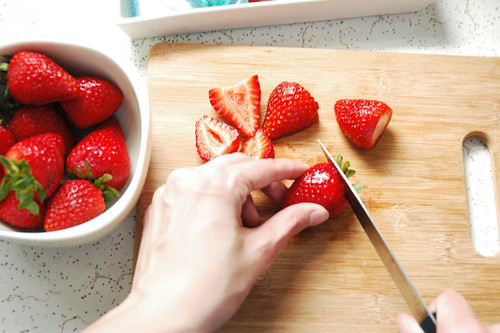Yesterday I baked a plum tart.

Sundays in Norway are perfect for baking. Most places with the exception of a few coffee shops or corner stores are closed, so you can take advantage of a little time off. This might mean a day out and about hiking (or at this time of year, skiing), or it might mean a slow home-y day, which for me usually involves some quality time in the kitchen. I went out walking for a few hours on Saturday, so I decided to take it easy yesterday and mostly hang out at home.

I had picked up some beautiful red plums at the grocery store earlier this week, which I’ve been enjoying, but it was becoming apparent that I wasn’t going to finish them all before they started to go soft and overripe. Not wanting them to go to waste, I sat down with my baking books a few days ago. I found a recipe for an Icelandic purple plum tart in The Great Scandinavian Baking Book that looked simple and delicious, and so yesterday I whipped one up, very successfully putting the pound of plums to good use.

As I often do with Beatrice’s recipes, I made a few little changes. She instructs you to quarter the plums, though I went ahead and sliced them into eighths, since the base of the tart is rolled out pretty thin and I find them easier to arrange when smaller. I’ve made a few notes for myself for next time, too: I could do with less flour all around (flour is always such a good argument for measuring by weight instead of volume) and the quantity of crumbly topping to go over the plums was too much as well (I didn’t use it all).

The tart turned out delicious nonetheless, and I was able to make it with ingredients I had on hand which is always a plus – aside from the plums, all that was needed was flour, butter, white sugar, and brown sugar. The end result was something like a thin-tart version of a German pflaumenkuchen (and indeed if you Google “plómukaka” you get a string of results for “Þysk plómukaka”, or German plum cake). And while the recipe called for purple plums, the red plums were just fine as a substitute (and just as beautiful, too, as the color of the skins starts bleeding out into the fruit and the tart itself).
You can find the recipe for this tart in The Great Scandinavian Baking Book by Beatrice Ojakangas.
 Oslo, January 2012
Oslo, January 2012



















